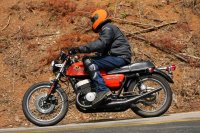thomas1
┌∩┐(◣_◢)┌∩┐
- Local time
- 1:53 AM
- User ID
- 322
- Joined
- Dec 29, 2015
- Messages
- 865
- Reaction score
- 4,782
- Location
- Cristobal Colon
Plus much longer intake tracts, larger mixing areas in the crankcase, longer rods on the crank, larger and longer transfer tunnels, etc. I've cut down a couple of older motorcycle pistons to use in saws but it was much more work than it was worth.
Is that why you switched to tuna cans?








